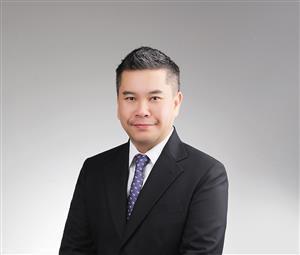In today’s rapidly evolving business world, the lines between technology and business have blurred. Organizations need to modernize and transform their technology in order to successfully compete. CIOs play a critical role in transforming the world of work using automation and technology – but they can’t do it alone. Collaboration among the C-suite is critical. In this blog series, Protiviti’s Technology Consulting leaders share insights on the key areas CIOs need to consider on the transformation journey and the impact across the C-suite and business.
More than half of companies undergoing a transformation project fail in the initial phase. And with this failure, organizations only partially achieve the value that should come from transformation — and they can experience overwhelming frustration that transcends the organization. For a company to be successful, it must implement a governance program that is aligned with business goals — with a laser-like focus on achieving value while balancing risk. Ultimately, a governance command center — the central nervous system of enterprise transformation — is integral to arriving at targeted value. The following are key considerations for a successful journey:
- Define a transformation program plan
- Address risk by understanding how it aligns to overall transformation goals and the impact if not addressed
- Develop a comprehensive next-level program and governance plan with tracking and reporting
- Identify clear assignment of responsibilities with accountability
- Align individual project goals with overall transformation strategies
- Ensure that both the budget and planning have adequate focus on ensuring that expected benefits and KPIs have been realized.
Defining Value but Ignoring Risk Is Disastrous Governance
Dynamic governance is on a value and risk continuum. Transformation management offices (TMOs) can be more successful by having open conversations about risk. Risk does not simply go away if ignored; on the contrary, risk grows and permeates and causes even more damage over time. TMOs with a governance structure that accommodates a feedback loop into decision-making for changes in risk can overcome and minimize impact to the value the enterprise transformation is meant to deliver. Additionally, executive leadership must recognize the role of Enterprise Risk and Internal Audit in assessing risk independently and providing effective challenge for balanced governance.
To begin, organizations must:
- Understand and define the value of transformation and the associated risks
- Understand the impact to transformation value if not remediated
- Drive risk mitigation
- Measure performance against value criteria and risk appetite to ensure transformation is being achieved.
Go Beyond Basic – Implement Next-Level Governance
An effective governance structure creates alignment back to enterprise stakeholders’ and customers’ needs. There must be purposeful focus and organization-wide alignment on achieving the benefits of transformation, finding the union of different executives to align on vision, value and managing risk, and tying it all back to cross-functional alignment. This eliminates silos by focusing on how the value is delivered across the organization’s functional boundaries.
Experienced TMOs go beyond the basics of developing project plans and tracking progress — however, they must fulfill these responsibilities too. They implement next-level governance, owning the desired results, balanced with evaluating associated risks. How do organizations arrive at next-level governance? Creating good project- and program-level plans and mapping a critical path to transformation is not enough; these are not the decisive factors for success. Executive meetings must go from information-sharing and status presentations to driving decisions, committing to actions and enforcing accountability.
To have next-level governance, it is important to think differently about governance and understand that it’s not just about control. Governance is about tying it all together. It is about value, decisions, guidance, risk and understanding resourcing. It is about plan completeness and understanding dependencies — and the methodologies at play. For instance, regardless of whether Agile, waterfall or hybrid approaches are used, there will be complex dependencies. It is critical that the stage gates are defined and certain criteria are addressed. TMOs have an opportunity to rise above the transformation dust by understanding how all pieces fit together to provide a critical path that is transparent and comprehensive — one that establishes effective and efficient workflow to achieve goals regardless of approach.
When complex dependencies are not sufficiently addressed, completeness, accuracy, velocity and effectiveness suffer. For example, a transformation program team that pushes out the end date of development can create an overlap with validation phases like system, integration and user acceptance testing (SIT and UAT). If development is ongoing during these validation phases, the overlap will make it much more challenging to ensure the completeness and accuracy of the testing due to potential changes in the underlying technology. That’s not to say you can’t be somewhat flexible – rigidity with either waterfall or Agile reveals weakness in the program management and governance approach. But ongoing analysis of phase gating criteria paired with focused discussions of risks as part of the ongoing governance approach can help organizations make better informed and intentional decisions on the balance between flexibility and adverse business outcomes.
Many Factors to Resource Sufficiency
A key element to effective governance is having a TMO that establishes clear roles and responsibilities, along with accountability. Roles and responsibilities should be inclusive of all key stakeholders on the program, from the TMO and core project team members to key business and technology owners, vendors and system integration partners — and last, but no less important, leadership comprising the program governance functions. Questions to consider include whether the organization has:
- Aligned the right resources and skills to be successful
- Determined the risks and impacts to achieving defined value
- Created a transformation command center equipped to establish the reality of the transformation in a way that is aligned across various project teams while solving for capacity and resource constraints (people, time and budget)
- Identified all program tasks and dependencies to ensure comprehensive management; while this is not directly resource-oriented, if we miss an upstream effort and fail to engage that team (and hold them to account), the project is at risk.
See the Forest through the Trees
Successful TMOs align individual project team goals with the benefits of overall transformation. For instance, a scenario where the system integrator believes their team is on par— while the business has serious resource shortfalls and unaddressed dependencies — does not have transformation alignment.
While teams engaged on complex programs can be effective at individually managing themselves, the crossroads are determined by how the teams intersect on an aggregate approach. TMOs solve for this challenge. There is a recognition that while it is one thing to manage a team of six, ten or 20 people, it is another thing entirely to manage a team of hundreds who must all achieve a common goal, thus requiring elevated program management and governance.
Team dependencies, as well as activities and goals of each program team, must be knitted together and aligned with transformation value. The TMO must ensure that decision-making at the team level is not decreasing the value proposition of the overall program.
Performance Management
Successful governance structures have a clear path for actionable, effective decision-making, born from performance that is properly measured and managed. For each objective, the right metrics and basis for measurement should be developed for each work stream. Regular, transparent updates on performance and the delivery of value should be presented throughout the project life cycle to provide insight into the progression of that work vs. targets. A few examples include:
- Data Conversion — should measure conversion-specific metrics for each data object being converted (e.g., time to convert, fallout/error percentages, etc.).
- SIT — should measure testing progression against functional requirement points, as well as incidence of issues by severity
- UAT — should measure testing progression against end-to-end business process scenario outcomes, not just the same functional points as SIT (e.g., order initiated through cash received as a transaction scenario), as well as incidence of issues by severity.
Reaping – and Measuring – the Benefits
One of the most overlooked aspects from a governance perspective is the realization and measurement of results and value, which are often tracked with overall transformation KPIs. Transformation teams often focus on planning and setting budgets around the transformation project itself, without allowing for the review and measurement of end results. It’s not uncommon for transformation teams, once the project is completed, to hand over delivery to the functional or technology stakeholders and either leave the organization or return to their business-as-usual roles. Planning — and budget —to measure the end results is often overlooked. A successful governance program should ensure that there is adequate focus on evaluating and measuring the end results to ensure that the planned benefits and KPIs have been achieved.
Transformation value is achieved by successfully managing the execution of the program across all workstreams and effectively managing against risk and value criteria, recognizing that risk mitigation is a key enabler activity to unlocking transformation value. Over time, balanced governance evolves and adapts by leveraging on a transformation command center. Effective governance helps enable this critical balance. Starting with governance in mind and adapting throughout the transformation will enable the program to be a success.
Next up in our Technology Modernization and Transformation series, we’ll talk about Solution Design and key considerations for the CIO. Stay tuned!
To follow all the blogs in this series subscribe now.







